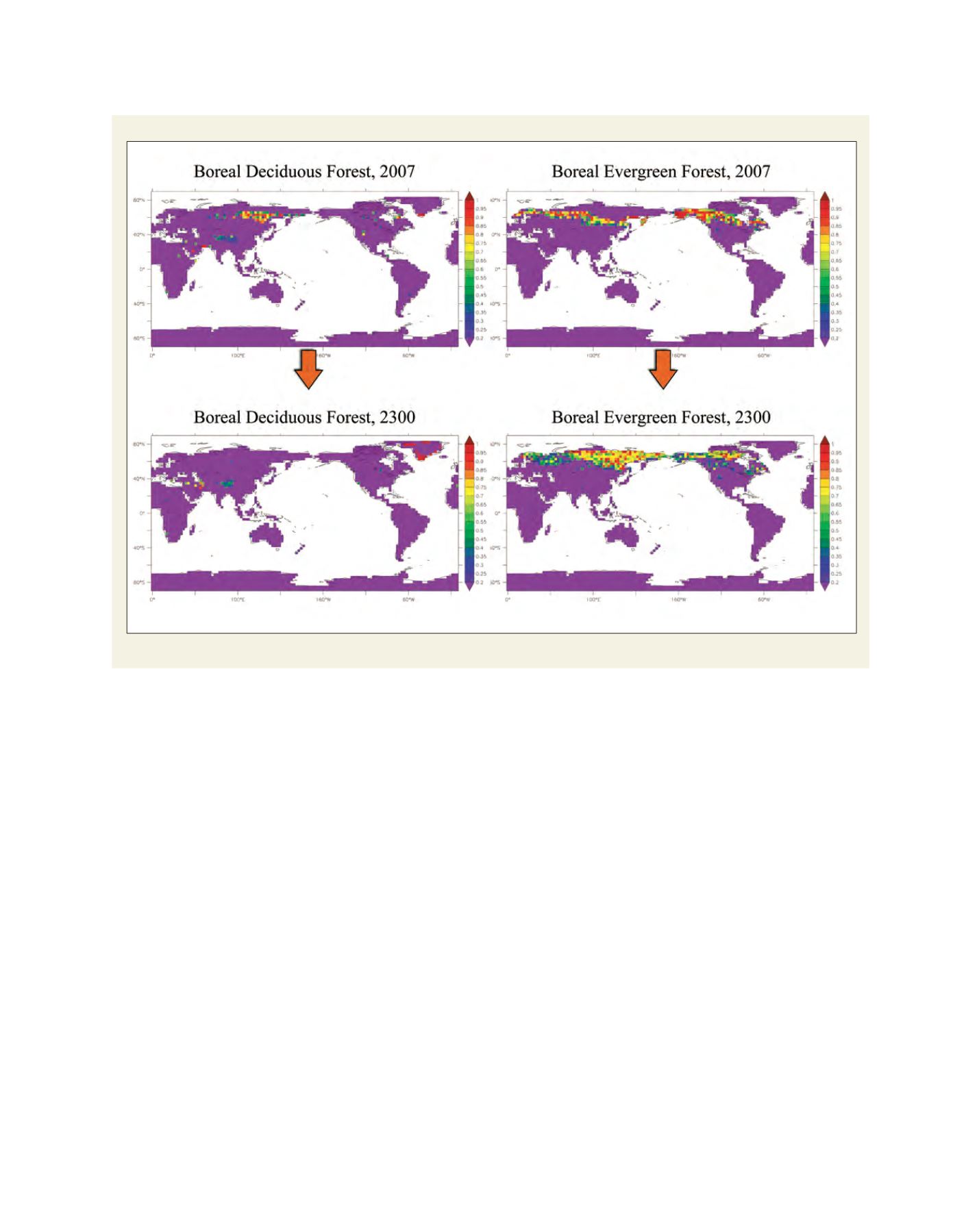

[
] 293
organs, decomposition of soil organic compounds, and the result-
ant carbon cycle in land ecosystems. The response of vegetation to
high CO
2
concentration, one of the essential parts of the module
for projecting future behaviour of vegetation, is also formulated
in most cases considering the balance of photosynthesis, stomatal
response, and availability of environmental resources such as soil,
water and nutrients. Combination of the physics and physiology
module enables the projection of changes in vegetation dynamics
due to those occurring in the future climate.
The investigation of possible transitions in vegetation distribution
under a changing environment also needs to take into account the time
lag between changes in climate and actual shifts in biome. A dynamic
global vegetationmodel (DGVM) used for this purpose deals with proc-
esses such as settlement of trees and competition for light and water
among different species in order to estimate the time lag. Many available
DGVMs assume that the model’s single grid is shared by multiple plant
types and that their respective assignments evolve gradually, based on
indices such as productivity of the plant types involved.
Another scheme to describe competition involves directly simulat-
ing the life cycles of individual trees. The merits of this approach
include the fact that competition for light can be expressed in an
explicit way and that parameter values obtained in observations can
be reflected with ease and utilized for model improvement. In the
light of these advantages, the Japan Agency for Marine-Earth Science
and Technology’s Earth system model for interdisci-
plinary research on climate (MIROC-ESM) adopts a
terrestrial vegetation sub-model, the Spatially-Explicit,
Individual-Based DGVM (SEIB-DGVM).
Under the framework of the Coupled Model
Intercomparison Project Phase 5 (CMIP5), which is
expected to contribute to the fifth Assessment Report
of the Intergovernmental Panel on Climate Change,
MIROC-ESM has been used for projection of the global
environment for the next 100 years, or 300 years for
certain scenarios, as completion of a biome shift would
require an extremely long time. The scenarios used
are called Representative Concentration Pathways
(RCPs) and consist of four datasets, that is, RCP3PD,
RCP4.5, RCP6.0 and RCP8.5, with an ascending order
of projected CO
2
concentration. RCPs include LUC
projection, and SEIB-DGVM has been modified so it
can evaluate impacts of LUC on vegetation distribution,
carbon cycle and climate.
Forest management and the carbon cycle
In a study of the global mean surface temperature
projected by MIROC-ESM for the four RCPs, it can
be seen that RCP3PD is the scenario that roughly
Projected transitions in vegetation distribution
Source: JAMSTEC/MEXT
Distribution of boreal deciduous (left) and evergreen (right) forest at 2007 and 2300, simulated by MIROC-ESM based on the RCP4.5 scenario
















